
3
NovThe Ethel to My Lucy, The Thelma to My Louise
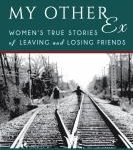 In the first semester of seventh grade, my parents ripped me from what was a comfortable Berkeley, California childhood. I had already left New England when I was six years old to begin a new life in Northern California. In this next move, however, I was in junior high where it was supposed to be a new, cool adventure. Yet in mid-October, our family moved twenty miles away to the boring suburbs. Worse yet, I was plunked back in elementary school where, in 1964, the neighborhood school included kindergarten through the 8th grade.
In the first semester of seventh grade, my parents ripped me from what was a comfortable Berkeley, California childhood. I had already left New England when I was six years old to begin a new life in Northern California. In this next move, however, I was in junior high where it was supposed to be a new, cool adventure. Yet in mid-October, our family moved twenty miles away to the boring suburbs. Worse yet, I was plunked back in elementary school where, in 1964, the neighborhood school included kindergarten through the 8th grade.
My Berkeley pals had been my best friends since first grade and they now lived 20 miles away. It might have been hundreds of miles, though, in an era when families had one car and the breadwinner and father of the family took it to work and back each day, leaving us stranded. For a few weeks, I watched as the neighborhood girls walked to school together, some of them shyly smiling but making little effort to include the new girl.
Those middle years are tough enough and moving made it all the harder. I spent afternoons outside my house at my favorite pastime: roller skating on the sidewalk. The Berkeley sidewalks had been flat and easy to navigate. The sidewalks in my new foothills town neighborhood were steep and scary. Within days, I had fallen backwards on those skates and broken my arm. I was now the new girl – in a cast.
But as kids always do, I made friends at school and in the neighborhood. Families were larger then and siblings and their own neighborhood friendships eventually made the transition easier. Over time, memories of my Berkeley years melted into the new story of my childhood.
Soon my newest best friend was the girl living next door. Although she was one year behind me in school. I had three brothers and she had two. We bonded over our single-daughterhood as the only girls in the family with our own frilly girl rooms. Over the years and through high school graduation, we were more like sisters than neighbors or friends. I squeezed into her sweaters and shoes; she adopted my mother as her own. We had constant sleepovers and listened to her 78s and 33s on her record player. My mother taught us how to cook or make multi-colored Jello molds. Our youngest brothers were buddies, too, playing cops and robbers around our fenced yards, exploring the golden California foothills, or navigating the steep streets on skateboards.
There were other friends, of course. Both of us had circles of friends that both included and excluded each other just by their very nature. Yet, when we graduated from high school and into the various phases of life, we remained the closest of sister-friends. We married only a week apart, taking the major role in each other’s wedding as maid and matrons of honor. I was living in New England at this time and it was with wonder that months before our weddings, we realized we had chosen the same exact fabric for bridesmaids’ dresses. Less than a decade later, we would give our firstborn daughters our respective names.
We rarely disagreed. There were moments in high school when feelings were hurt. Like sisters, however, we managed to move on, often forgetting all the reasons for our differences. The one-year difference in age had always allowed for easy transitions from closeness to an easy and comfortable distance. Together we held on to each other through losses: the deaths of her father and of both of our mothers, the loss of my child to heart disease, and of her newborn nephew to SIDS.
Yet, somehow in the early years of motherhood, we both allowed a small disagreement to grow and create an irreparable rift. A year later, I had moved back to New England and the thousands of miles of physical distance made it oh-too easy to allow the chasm to remain so and we never spoke. Our children started school, played soccer and baseball, danced, excelled in school and made their own best friends. We remained, sadly, as distant as the coastlines 3000 miles from each other.
Luckily, after 15 interminable years, both of us realized that the loss we shared, the years missed, the bond that was torn was redeemable and we found each other together again. The fire had simply gone out of the quarrel and while it had left scarred, cold wood in its place, it took little forgiveness and much strength to regain what we had lost. Somehow, those old wounds had healed and we are stronger in the broken places.
Over the past 16 years, we see each other at least once a year although we still live 3000 miles apart. Sometimes, as many as 8 other girlfriends join us – friendships going back a half-century or more. My best friend and I celebrate each other every year either here in New England or in California because we realize we wasted too much time in the past.
Many of us, particularly women, have lost friendships – a loss that leaves us bewildered. Sometimes we know what happened, sometimes we don’t. Most of the time, we never get it back.
Twenty-six women have written of their stories of lost friendships in The Friend Who Got Away (2006) edited by Jenny Offill and Elissa Schappell. Writers Francine Prose and Katie Morris and among others, describe the loss they felt and still feel. Twenty other women wrote stories in Dumped: Stories of Women Unfriending Women (2015) edited by Nina Gaby. Jacquelyn Mitchard and Ann Hood are contributors.
In My Other Ex: Women’s True Stories of Leaving and Losing Friends (2014), edited by Stephanie Sprenger, there is evidence that perhaps not all friendships are lifelong ones. There are 35 essays that share stories of these friendships that were so important at the time, yet were not meant to last forever.
In 2011, Good Morning America received 15,000 applications for a new Dear GMA advice guru, and Liz Pryor got the job. In 2006, Liz Pryor wrote the first edition of What Did I Do Wrong?: What to Do When You Don’t Know Why the Friendship is Over. The book was updated in 2011 and it has plenty of advice if “your Thelma to your Louise”, “the Ethel to your Lucy” ends your friendship with no or little warning.
Losing your best friend, or even just one of your closest confidants, is heartbreaking. Other girlfriends might not understand and your husband may lack a sympathetic shoulder. The history you shared may disappear in thin air.
I’m thankful every day that my sister-friend and I were able to find each other again. At the same time, these essays and the advice are good to read to heal the hurt, or lead you to reconciliation. They are all available in the Minuteman Library Network libraries.
Charlotte Canelli is the library director of the Morrill Memorial Library in Norwood, Massachusetts. Read Charlotte’s column in the November 3, 2016 issue of the Norwood Transcript and Bulletin.
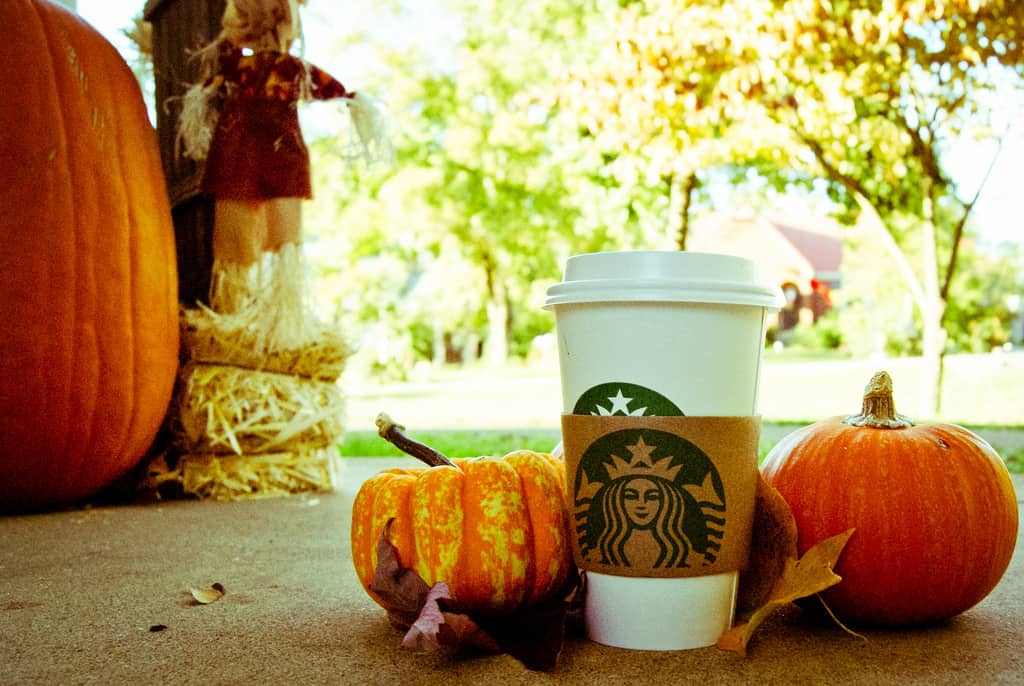
31
OctThe Spice of Life
 Well, it’s that time of year again. We’ve all seen the ads and we’ve all heard the commercials. Some of us can’t stop talking about the elephant in the room, some bemoan that it seems to creep earlier and earlier every cycle, and some just wish it were over. Whether you anticipate or dread it, none of us can deny that now, in late-October 2016, we are smack-dab in the middle of – pumpkin spice season.
Well, it’s that time of year again. We’ve all seen the ads and we’ve all heard the commercials. Some of us can’t stop talking about the elephant in the room, some bemoan that it seems to creep earlier and earlier every cycle, and some just wish it were over. Whether you anticipate or dread it, none of us can deny that now, in late-October 2016, we are smack-dab in the middle of – pumpkin spice season.
Yes, that’s right, pumpkin spice. Basically the best and most comforting flavor ever to grace a dessert table. Or latte. Or beer. Or candle, soap, you name it. I am unabashedly and firmly in the pro-pumpkin spice camp. Pumpkin spice has come to be a hallmark of Autumn in the United States, though I wouldn’t mind pumpkin spice being on the menu all year round. If you’re of the same mind, you should know that the Dedham Square Coffee House has Pumpkin Spice Latte’s on the menu all year, and they’re as fabulous in April as they are in October.
Some however, claim that the pumpkin spice phenomenon has gone too far. After all, pumpkin spice has spread far beyond the traditional Thanksgiving pumpkin pies of yore, and has infiltrated nearly every aspect of Fall in the US. You can find pumpkin spice lattes, chips, granola bars, tea, beer, muffins, cream cheese, and much more.
A strong argument can be made that Starbucks is chiefly responsibility for the current pumpkin spice explosion.. The coffeehouse giant developed the Pumpkin Spice Latte in 2004 to capitalize on the Fall season, having already had great success with seasonal winter beverages such as Peppermint Mocha and Eggnog Lattes. The recipe was an instant sensation, and more and more companies have been jumping on the pumpkin spice band wagon ever since. For further discussion and interesting tidbits about all things pumpkin spice, visit the Pumpkin Spice Blog hosted by the University of Oregon.
Pumpkin spice naysayers are also quick to point out that there’s not actually real pumpkin in pumpkin spice products, and that you’re really just tasting cinnamon and other spices. In fact the iconic Starbucks Pumpkin Spice Latte does now include a small amount of pureed pumpkin, though, and the ingredient labels for many other products do claim the inclusion of real pumpkin. Regardless, and I assume I speak for many pumpkin spice lovers, we don’t care. Cinnamon, allspice, cloves, and ginger are traditional pairings for pumpkin, as I maintain the name “pumpkin spice” clearly implies. We’re after the pumpkin pie flavor, and these products don’t disappoint.
Modern Americans are not alone: apparently, no one has ever enjoyed the flavor of plain unadulterated pumpkin. Even the earliest recorded recipes for pumpkin advise the addition of savory or sweet ingredients. According to the book “Vegetables: A Biography,” pumpkins and other squash were among the first crops cultivated by humans. Prized in some cultures for their seeds and in others for their flesh, squash have been an important part of the global diet for about as long as we’ve been preparing food.
Given the late harvest for pumpkins and the fact that they overwinter so well, they were an important staple in Colonial America. A 1672 recipe for stewed pumpkin, originally recorded by John Josselyn, is reprinted in the book, “Giving Thanks: Thanksgiving Recipes and History, from Pilgrims to Pumpkin Pie.” Pumpkin pie as we think of it today was probably not served at the first Thanksgiving feast however, since the ovens necessary for baking pie crusts were not available in the colonies at that time. According to the What’s Cooking America website, the first recorded “modern” pumpkin pie recipe appeared in a cookbook by famous French chef Francois Pierre la Varenne in 1651, “The True French Cook.”
We all have different tastes, and I don’t expect to make any converts with this brief article. However, pumpkins and their spices have always been part of our cultural diet, and our heritage. You could choose to see pumpkin spice as a symptom of aggressive marketing in a consumerist culture – or you could see it as a tasty act of patriotism.
Liz Reed is an Adult Services and Information Librarian. Find her column in the October 27th edition of the Norwood Transcript.
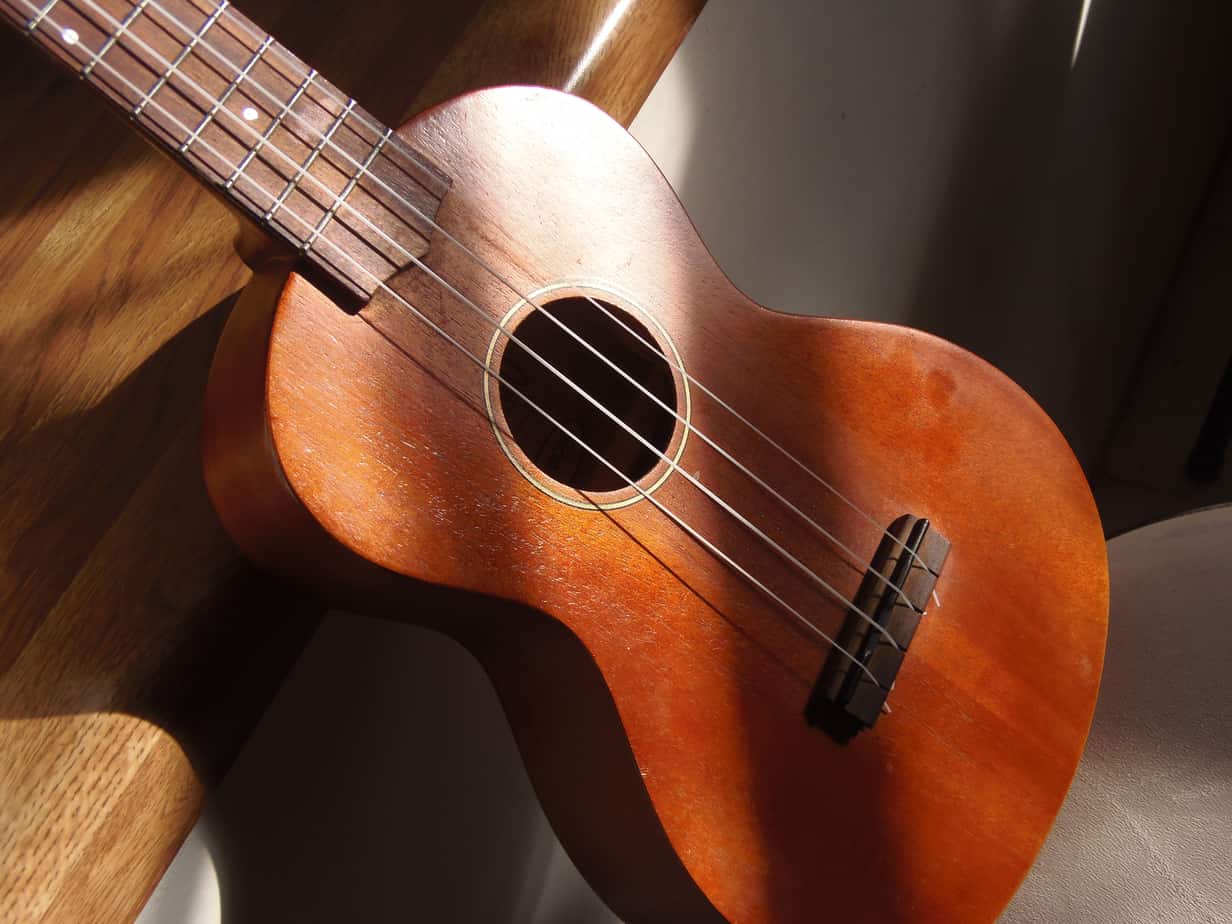
19
OctThe Library: Striking a Chord
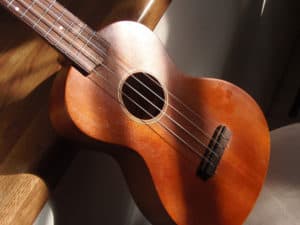 When I was child I spent so much time at the library it felt like a second home. As the years passed, other pursuits such as afterschool activities and part-time jobs began to monopolize the free time I had happily spent lost in books. During high school and college the library became relegated to a more utilitarian role – a place to study in peace or conduct research. After graduating, I found my way back to using the library for fun. Yet throughout my life and wherever I go the library has always been a resource I am aware of and a place I feel welcome. I was surprised to learn that this is not a universal experience. When a friend bemoaned that she was going broke buying DVDs for her young children, I asked why she didn’t just go to the library. She said she didn’t have the time or patience to hunt for them. My recommendation that she search the online catalog and simply place holds was a revelation. Yet in all the time I was singing the praises of the library, it never occurred to me to set my sights on becoming a librarian. Luckily, I finally had a revelation of my own and enrolled in Simmons’ School of Library and Information Science.
When I was child I spent so much time at the library it felt like a second home. As the years passed, other pursuits such as afterschool activities and part-time jobs began to monopolize the free time I had happily spent lost in books. During high school and college the library became relegated to a more utilitarian role – a place to study in peace or conduct research. After graduating, I found my way back to using the library for fun. Yet throughout my life and wherever I go the library has always been a resource I am aware of and a place I feel welcome. I was surprised to learn that this is not a universal experience. When a friend bemoaned that she was going broke buying DVDs for her young children, I asked why she didn’t just go to the library. She said she didn’t have the time or patience to hunt for them. My recommendation that she search the online catalog and simply place holds was a revelation. Yet in all the time I was singing the praises of the library, it never occurred to me to set my sights on becoming a librarian. Luckily, I finally had a revelation of my own and enrolled in Simmons’ School of Library and Information Science.
The library has gone through a metamorphosis since I was a kid. It is now a beautiful hybrid that encompasses the traditional books of my childhood together with a host of online resources and new technology. This suits me just fine. Although I’m as likely as anyone to use Google and other internet resources, I’m a tactile person who will always love the feel of a book in my hand. I also like the idea of going to the library, browsing, and finding something I didn’t know I needed. Online tutorials are great, but for me they work in conjunction with the books, DVDs, CDs, and magazines I can find at the library. I have used these materials to research vacations, brush up on my high school Spanish, acquire computer skills, try new recipes and learn about everything from improving my writing and making jewelry to the psychology of why we do what we do, and how we can do things better. Whenever I get the yen to try something new, I include the library in my search for information.
This year my husband, who usually gets me flowers for our anniversary, surprised me with a ukulele. I laughed when I recalled how we’d been watching a TV show weeks before, and one of the characters greeted his long-lost daughter at the airport strumming a ukulele and singing a modified version of the Who’s “Teenage Wasteland.” At the time, I’d waxed philosophic about the inimitable voice of the little instrument, and how fun it would be to just pick up said instrument and put my feelings to song. I admit that by the time we’d moved on to the next episode, I’d all but forgotten my desire to improvise little ditties about the day. Now, holding the tiny body in my hands and running my fingers over its diminutive strings I loved the idea of the ukulele even more, but wondered about actually getting a proper tune out of it. Yet the longer I held it, the more it was like that puppy at the pound that you spend too much time adoring; before long you know you’re done for. So it was settled: learning the ukulele was my latest yen.
Although I identify as a self-directed learner, this particular thing seemed a bit outside my grasp. So I did what any librarian-in-training would do, and went into research mode. First, I Googled “learn ukulele” which returned an avalanche of results. Who knew? Clicking on the first link, I discovered that the site’s creator, a musician and member of the Ukulele Orchestra of Great Britain (again, who knew?) had authored a book on the subject, so my next step was to search for it in the library’s online catalog. A library in the Minuteman Network owned a copy. I then searched the catalog for just “ukulele” which revealed an array of items from Ukulele for Dummies to Ukulele: A Visual History. I found CDs, DVDs, and even a ukulele kit. I also explored the Commonwealth Catalog – which allows patrons to search outside the Minuteman Network for items in libraries across Massachusetts. More resources greeted me there, including additional ukulele kits. While I’m no stranger to the interesting items one can borrow from the library – such as Morrill’s knitting needles, cake pans, microscopes, and even Wi-Fi hotspots – I was surprised by the ukulele kits out there. Curious to learn what might prompt a library to offer a ukulele, I decided to inquire. I called one of the libraries and found that a local music store had donated it. When asked if it was popular, I learned that it gets borrowed “occasionally.” Although that library hasn’t yet offered any related programs, they would consider it if patrons showed an interest. I find it encouraging that libraries in general are broadening their scope. Now we just have to spread the word and cultivate a wider audience.
I ended up placing holds on a couple books, a DVD, and a CD from my search, which I plan to supplement with online tutorials. My penultimate semester of library school might seem a strange time to pick up a new hobby, given the hectic schedule – but I actually think it makes sense. Whenever I need a short break from my studies, I pick up the uke and strum. Who knows? I may yet master my own improvised version of “Teenage Wasteland.” Perhaps I’ll even launch a ukulele program at a library, some day. It turns out we can tackle even the things that seem a bit beyond our reach. The library waits, now as ever, to provide the resources we need.
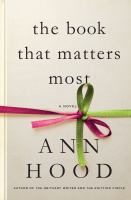
13
OctComfort and Joy in the Writings of Ann Hood
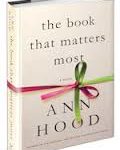 I wish I had thought to spend my 60th birthday having as much fun as author Ann Hood has. By the time she turns 60 this December 9, she will have celebrated with 60 cupcakes with 60 different book groups.
I wish I had thought to spend my 60th birthday having as much fun as author Ann Hood has. By the time she turns 60 this December 9, she will have celebrated with 60 cupcakes with 60 different book groups.
Right after it was published, I discovered Ann Hood’s non-fiction memoir Comfort (2008). I read the advance review with interest. Having lost a child myself, I was related to her raw expressions of grief after losing her five-year old daughter in 2002. It was an absolutely hell-ridden journey of only 36 hours, when Grace died of an unthinkably virulent and destructive strep infection. It was a horror that some parents have to endure – the unimaginable sojourn of a losing a child.
Ann Hood and her husband returned from the hospital to tell their living older son, Grace’s older brother Sam, that his sister had died. So unexpectedly and so quickly.
Ann Hood’s raw grief was that which only a parent can feel. The mind-fog. The confusion. The nightmarish realization that life has sped up but left you behind with a child’s clothing left on a hook, her toys left on a shelf, desolate comforters and pillows left on a bed.
Ann Hood and other parents never really recover from the gut-wrenching grief of losing a child. But, they do learn to live again. Deeply, richly, and happily. Comfort speaks to the journey back to life that Ann Hood lived.
Besides reading a few non-fiction essays in books that were edited by Ann Hood, or those that she was included in, I had little experience with her writing before or after 2008. A few years ago, however, my husband gave me Knitting Yarns: Writers on Knitting in 2013, a compilation of essay written by women who knit (and who happen to write, too.) When her book, Knitting Pearls: Writers Writing about Knitting (2016) hit the library shelf earlier this year, I was one of the first to grab it.
After Grace died in 2002, Ann Hood could not write for several years. Consumed with grief, she sought solace in the comfort of knitting. Two years later, however, The Knitting Circle was published with a familiar theme: a woman who has lost her only child suddenly. In the book, mother Mary Baxter not only learns knitting technique, but that a caring and loving camaraderie can be found in a group of knitters.
Ann Hood did not begin to write about grief only after her daughter Grace died, however. One of her earlier novels, (Ruby, 1998) is the story of a woman who is widowed early in her marriage. Yet, it is not until her own father’s struggles with cancer in the late 1990s does Ann face death head on in her non-fiction memoir, Do Not Go Gentle.
And what does this have to do with 60th birthday parties, cupcakes, and celebration?
Ann’s latest novel, The Book That Matters Most, was published in past August. Her publisher challenged her to visit 60 book groups before her 60th birthday which is coming up on December 9. On her Facebook page, Ann invited herself to any book group – whether it be on Skype or in person. Because Ann lives in Providence, Rhode Island, the staff book group at our library was the perfect venue. I invited Ann and the only stipulation for her visit was that we all read her most recent book and sing happy birthday with a candle and cupcake.
On Friday, September 30, nearly 20 of our staff wished Ann a happy 60th birthday after she shared her stories of writing with us. While she began with questions about The Book That Matters Most, she quickly answered questions about her writing history, writing style, and writing techniques. We learned that Ann has written a young adult novel, biographies for children, and that she teaches writing in an online course through the Fine Arts Work Center in Provincetown. In addition, she has taught in writing programs in New York and Vermont.
Ann began her published writing history when she finished her first novel (Off the Coast of Maine, 1983). She was a flight attendant at the time, attending graduate school, and spending her furloughs feverishly writing the book that would begin her career as a published writer. At the time, she was overcoming the loss of her older brother, Skip, who had died unexpectedly in an accident. When the book was finally published in 1987, Ann had already learned that her person experience in three short stories, was really meant to be a novel.
Shortly after Ann’s career as a flight attendant ended with layoffs due to a TWA strikes, she began writing full time and in earnest. Her second book was followed by a third and within a decade, she had published at least seven novels.
Ann’s recent novels (The Red Thread, 2010; The Obituary Writer, 2013; and The Italian Wife, 2014) join the personal essays she has contributed to compilations. These appear in Dumped: Stories of Women Unfriending Women; Sorrow’s Company: Writers on Loss & Grief; Drinking Diaries: Women Serve Their Stories Straight Up; Every Father’s Daughters: 24 Women Writers Remember Their Fathers; Cook and Stealing; and Because I Love Her: 34 Women Writers Reflect on the Mother-Daughter Bond.
In the essay “Little Audrey” (in Cooking and Stealing, 2004), Ann writes of her personal pilgrimages of helping heal her father of cancer. In “Not the Daughter She Had in Mind” (in Because I Love Her, 2009), Ann looks back on the relationship she had with her mother. “How I Lost Her” (in Dumped, 2015), Ann shares her sadness of a friendship ended with one of her oldest and dearest friends.
I find Ann’s essays particularly poignant and relevant to my own life. She has found both comfort and joy in life lost and in life found.
Charlotte Canelli is the library director of the Morrill Memorial Library in Norwood, Massachusetts. Read Charlotte’s column in the October 13, 2016 edition of the Norwood Transcript and Bulletin.
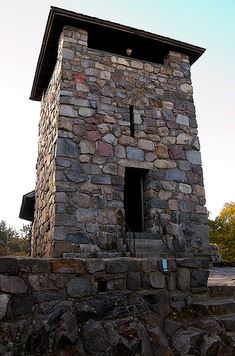
6
OctThe Path to Publication
 Many years ago my Grandmother and Great Auntie Babe decided to take my cousin and me for a hike up the Blue Hills. We were seven or eight years old. It was one of those memorable days, not because of the weather (hot and sticky) or the prediction (a warning to watch out for rattlers). No, it is engrained in my memory because of the silly conversation we had along the way.
Many years ago my Grandmother and Great Auntie Babe decided to take my cousin and me for a hike up the Blue Hills. We were seven or eight years old. It was one of those memorable days, not because of the weather (hot and sticky) or the prediction (a warning to watch out for rattlers). No, it is engrained in my memory because of the silly conversation we had along the way.
My cousin and I sounded more senior citizens than the seniors who were taking us up the hill. We hadn’t progressed very far when I let everyone know how I was feeling.
“My legs are killing me,” I said.
“You can say that again,” my cousin chimed in.
With that my grandmother and aunt howled with laughter. They thought we were far too young to be complaining about aches and pains. Needless to say this became one of the legendary stories that we would retell at family gatherings. I am still surprised they didn’t lose complete faith in the younger generation at that point.
That said, getting up that hill did take some effort. We had our sneakers and our walking sticks. We were young and energetic, not to mention confident that we could beat our older relatives to the top. No problem. Boy, did we have a few things to learn.
So too with writing, and more so with publishing. Since grade school writing had come easily to me, unlike chemistry, which was a natural disaster in high school, or economics, which ruined my first semester in college. Give me an article to write, a short story to create, and I was in my element. Or so I thought, until I submitted my first piece of poetry for publication on a cold day in 1999. Then I got a reality check.
My first rejection letter appeared in the mail (back in the old days). Soon I was keeping a pin cushion by my desk. I stuck red pins in for all of my rejections. Now and then I would add a green pin to represent a meager acceptance. I was starting to realize this publication gig took leg work, and my legs were killing me.
“You can say that again!”
It wasn’t as easy as whipping out a poem one night and seeing it in The New Yorker the next month. This was a climb and I was going to need some assistance. Turns out the best guidance came from my critique groups. I can’t recommend this enough. Allowing your work to be workshopped and critiqued is never easy but, for most of us, it is one of the best ways to perfect your art.
Other advice came in the form of books. A few of my favorites can be found in our library. While I haven’t read one of Stephen King’s works of fiction (too scary), I love his book On Writing. Through memoir and inspiration, King inspires his readers to better their craft.
Another book that tackles the nuts and bolts of writing is Words Fail Me by Patricia T. O’Conner (also the author of Woe Is I). The byline for the book is “what everyone who writes should know about writing” and this former New York Times Book Review editor hasn’t failed me yet.
For those who loved Natalie Goldberg’s Writing Down the Bones, I would recommend her latest work called The True Secret of Writing: Connecting Life with Language. This book is intended to light a spark and to inspire authors to pick up a pen, long before you invite the criticism in.
If you decide to submit your work to a publisher, however, you must be ready for the possibility of rejection and more criticism. The effort that goes into each revision is never easy. I have revised for editors and agents, changed my characters from boys to ducks. I have added words, subtracted metaphors, and editors have claimed to love the story. Still, the Big Kahuna editor who sits on the top of Blue Hills may decide it’s not quirky enough or it’s too quiet. So I rework it, and send it out again.
As authors the question we continually ask ourselves is “when will this thing be finished?” I have two answers. Ellen Bryant Voigt is famous for telling one poetry student, “Honey, it’s all draft until you die.” Certainly this is one thought. Maybe we will be revising until the day we die. However, there is another thought. Perhaps we are finished when we reach the top of the hill, i.e. when we have finished the climb.
Case in point, I received a phone call from Writer’s Digest when I was literally on a mountain. They wanted to let me know I had won the grand prize for my poem, White Birch. At the time I was attending the Frost Festival of Poetry in Franconia, New Hampshire. That very poem was being critiqued when I received that prize-winning call. Some people in that workshop had no idea what my poem was about. Others suggested a variety of edits. And, irony of ironies, in the middle of that the editors at Writer’s Digest thought it deserved a grand prize out of 18,000 entries. Sometimes success is a complete surprise.
My point? Hike those hills. Work hard. Write, and rewrite some more. At some point your work may be a winner in some editor’s mind, even if “it’s all draft until you die.” Someone will always have another criticism to add to the pile. Only you, the author, can decide when it’s done. All in all, it’s worth the back-breaking climb and then some. Don’t forget, “you can say that again!”
Nancy Ling is an Outreach Librarian at the Morrill Memorial Library and an author. Read Nancy’s column in the October 6th issue of the Norwood Transcript and Bulletin.
